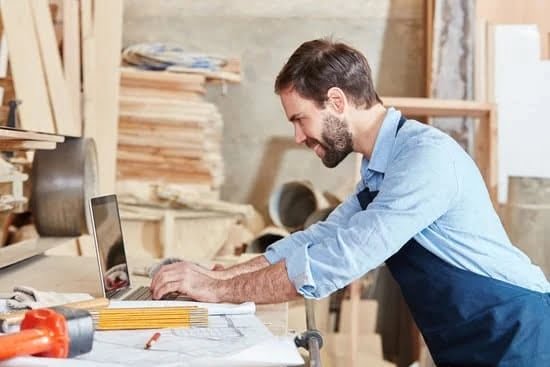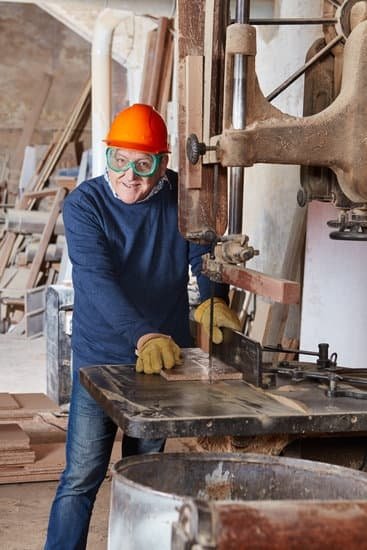Woodworking is a craft that requires precision and attention to detail. One of the key factors in achieving accurate results is using the right measuring tools. Whether you are a beginner or an experienced woodworker, having reliable and precise measuring tools is essential for ensuring the success of your projects.
Accurate measurements are crucial in woodworking because they determine the fit, alignment, and overall quality of the finished piece. Using incorrect or unreliable measuring tools can result in misaligned joints, uneven cuts, and ill-fitting components. This not only compromises the aesthetic appeal of the project but also undermines its structural integrity.
In woodworking, there are various types of measuring tools available. From traditional rulers to advanced digital instruments, each tool serves a specific purpose and offers unique advantages. By understanding the different options and knowing how to choose the right tool for each task, woodworkers can ensure accurate measurements and efficient work processes.
In this article, we will discuss the importance of using accurate measuring tools in woodworking. We will explore common measuring tools such as rulers, tape measures, and combination squares that are often used by woodworkers. Additionally, we will delve into precision measuring tools like calipers, dial indicators, and laser distance measurers that enable intricate woodworking projects.
Furthermore, we will cover techniques for measuring angles with bevel gauges and protractors. Lastly, we will provide tips on selecting the most suitable tool for specific projects as well as advice on maintaining and calibrating your measuring instruments.
Stay tuned to discover how investing in high-quality measuring tools can elevate your woodworking skills from average to exceptional.
Common Measuring Tools
Woodworking requires precise measurements to ensure accurate cuts and joinery. Common measuring tools play a crucial role in achieving this accuracy. Here are some of the essential measuring tools widely used in woodworking:
Rulers
Rulers are one of the most basic yet indispensable measuring tools in woodworking. They come in various lengths, such as six inches or twelve inches, and typically have both imperial and metric markings. Rulers are ideal for measuring small distances or marking straight lines.
Tape Measures
Tape measures are a versatile tool that can measure longer distances more easily. They consist of a flexible metal strip with measurements marked on it. Tape measures often extend up to 25 feet or more, making them convenient for measuring lengths when cutting boards or assembling large pieces of furniture.
Combination Squares
Combination squares are multifunctional tools that include a ruler, level, and square all in one. They are particularly useful for checking if edges are square, drawing lines at precise angles, and setting up machinery accurately. Combination squares usually have an adjustable steel blade that can be locked at different angles.
While these common measuring tools serve many purposes, there are instances where more precision is required.
Precision Measuring Tools: Highlight the significance of using precision measuring tools for more intricate woodworking projects, including calipers, dial indicators, and laser distance measurers
For detailed and intricate woodworking projects, precise measurements become crucial. This is where precision measuring tools shine. Here are some precision measuring tools that woodworkers often rely on:
Calipers
Calipers are ideal for micro-measurements where utmost accuracy is needed. These hand-held devices come in two forms – inside calipers for taking internal measurements and outside calipers for external measurements. Calipers have fine-tuning screws that allow users to make precise adjustments for accurate measurements.
Dial Indicators
Dial indicators are useful for measuring minute distances and detecting slight variations. They have a rotating dial with a needle indicating the measurement. Dial indicators often come with various attachments, such as depth probes or magnetic bases, making them versatile tools for woodworking tasks like setting up machinery or checking alignment.
Laser Distance Measurers
Laser distance measurers use laser technology to provide quick and highly accurate measurements. They emit a laser beam that reflects off surfaces and calculates the distance based on the time it takes for the beam to return. These devices are particularly useful for measuring longer distances without physical contact.
In addition to these precision measuring tools, there are specialized tools available for measuring specific angles in woodworking projects.
Precision Measuring Tools
In woodworking, precision is key when it comes to creating intricate projects with clean lines and accurate dimensions. This is where precision measuring tools play a crucial role. While common measuring tools like rulers and tape measures are suitable for general measurements, they may not provide the level of accuracy required for more delicate woodworking tasks. Precision measuring tools offer greater accuracy and precision, allowing woodworkers to achieve precise cuts and joinery.
One commonly used precision measuring tool in woodworking is the caliper. Calipers come in two main types – vernier calipers and digital calipers. Vernier calipers use a sliding scale to measure small distances with great accuracy, while digital calipers utilize electronic technology to provide fast and precise measurements. Calipers can be used to measure both internal and external dimensions of wooden pieces, ensuring a perfect fit for joints or precise measurements for detailed carving work.
Another precision measuring tool widely employed in woodworking is the dial indicator. Dial indicators are useful for determining minute variations or deviations from a reference point. They consist of a needle that moves along a calibrated dial, displaying measurements in thousandths of an inch or millimeters. Woodworkers often use dial indicators in conjunction with jigs or fixtures to ensure proper alignment and accurate cuts.
Laser distance measurers (LDMs) have become increasingly popular in the woodworking industry due to their convenience and accuracy. LDMs use laser technology to quickly and accurately measure distances up to several hundred feet. These devices are particularly useful when working on larger projects that require precise measurements over long distances.
Utilizing precision measuring tools not only enhances accuracy but also saves time by eliminating guesswork and rework associated with inaccurate measurements. When working on intricate woodworking projects that demand precise cuts, joints, or carvings, investing in high-quality precision measuring tools is essential. These specialized tools enable woodworkers to achieve the level of accuracy and precision required for successful completion of their projects.
Measuring Angles
In woodworking, accurately measuring and cutting angles is essential for creating precise and aesthetically pleasing joints, bevels, and designs. To achieve this level of precision, woodworkers rely on specialized tools and techniques for measuring angles. This section will explore some of the commonly used tools and techniques for measuring angles in woodworking.
One of the most common tools used for measuring angles in woodworking is the bevel gauge. A bevel gauge consists of a handle with a sliding blade or arm that can be set at specific angles. Woodworkers can adjust the blade to match an existing angle or transfer an angle from one piece to another by tightening down the locking mechanism. Bevel gauges are particularly useful when working with angled joinery, such as mitered corners or angled cuts.
Another tool frequently used to measure angles in woodworking is the protractor. Protractors are circular or semi-circular devices with markings in degrees that allow woodworkers to measure angles easily. They come in various sizes, from small handheld versions to larger ones that can be clamped onto workpieces for more stability. Protractors are versatile tools that can measure both external and internal angles accurately.
When it comes to more complex angles or non-linear curves, other tools like adjustable angle squares or contour gauges may be necessary. Adjustable angle squares have a pivoting mechanism that allows woodworkers to set various angles precisely. These squares are especially handy for measuring irregular shapes or replicating complex designs consistently. Contour gauges, on the other hand, are used to trace and transfer irregular shapes onto workpieces accurately.
In addition to the tools mentioned above, there are various other techniques available for measuring angles in woodworking. Using reference lines on workpieces, creating templates from paper or cardboard, or using digital inclinometers are just a few examples. Woodworkers may choose different tools and techniques based on the specific angle they need to measure or the complexity of their woodworking project.
| Tool | Description |
|---|---|
| Bevel Gauge | A tool with a sliding blade used to measure and transfer angles accurately. |
| Protractor | A circular or semi-circular measuring device with degree markings for measuring angles easily. |
| Adjustable Angle Square | A square with a pivoting mechanism that allows for precise angle measurements, particularly useful for irregular shapes or complex designs. |
| Contour Gauge | A tool used to trace and transfer irregular shapes onto workpieces accurately. |
Advanced Measuring Tools
Digital inclinometers and contour gauges are advanced measuring tools that can greatly aid in complex woodworking tasks. These tools provide precise measurements and allow woodworkers to achieve accurate angles and contours in their projects.
A digital inclinometer, also known as a digital level or angle finder, is a tool used to measure angles and slopes. It features a digital display that provides an exact measurement of the angle, making it easier for woodworkers to achieve precise cuts and joinery.
Digital inclinometers are especially useful when working on projects that require specific angles, such as furniture legs or picture frames. They eliminate the need for manual calculations and guesswork, ensuring accuracy and efficiency in woodworking tasks.
Contour gauges, on the other hand, are used to replicate irregular shapes or contours onto another piece of wood. They consist of a series of movable pins or blades that conform to the shape being measured. Woodworkers can press the gauge against an object with an irregular shape, such as a decorative molding or curved edge, and then transfer that shape accurately onto their workpiece. Contour gauges are invaluable tools when working with intricate designs or reproducing complex patterns.
| Tool | Features | Benefits |
|---|---|---|
| Digital Inclinometer | – Digital display for accurate angle measurement
| – Precise cuts and joinery
|
| Contour Gauge | – Adjustable pins or blades to conform to shapes
| – Accurate replication of intricate designs
|
These advanced measuring tools are valuable additions to any woodworker’s toolbox, especially those who frequently undertake complex woodworking projects. With their precise measurements and ease of use, digital inclinometers and contour gauges can greatly enhance accuracy and efficiency in tasks that involve angles and intricate contours.
Choosing the Right Measuring Tool
Choosing the Right Measuring Tool: Provide tips and guidelines on how to select the most suitable measuring tool based on the specific woodworking project, budget, and skill level
When it comes to woodworking, choosing the right measuring tool is crucial for achieving accurate and precise measurements. Different woodworking projects may require different measuring tools, and considering factors such as your budget and skill level can help you make the best choice. Here are some practical tips and guidelines to keep in mind when selecting a measuring tool for your woodworking project:
- Determine the specific woodworking project: Consider the nature of your project. Are you working on small-scale projects like furniture making or larger projects like building structures? Understanding the scope of your project will help you identify which measuring tools are essential.
- Evaluate your budget: Measuring tools come in a range of prices, so it’s important to set a budget before making a purchase. Remember that while high-quality measuring tools may be more expensive initially, they can offer greater accuracy and durability in the long run.
- Assess your skill level: Beginners may want to start with basic measuring tools such as rulers or tape measures before investing in more advanced equipment. As your skills develop, you can gradually add precision measuring tools to your collection.
To make it easier to choose the right tool, here is a breakdown of some common woodworking projects along with their corresponding recommended measuring tools:
- Furniture Making: For precise measurements on smaller-scale projects like building furniture, combination squares are essential for ensuring accurate angles and lengths. A tape measure or ruler can also be useful for general measurements.
- Cabinetry: When working on cabinetry or larger structures, laser distance measurers are ideal for quickly and accurately determining distances. Combination squares can still be used for angle measurements, while a tape measure or ruler will come in handy throughout assembly.
- Fine Detail Work: If you’re working on intricate designs that require utmost precision, calipers and dial indicators are indispensable tools. These precision measuring tools allow you to measure small details accurately.
- Joinery: When it comes to joinery and fitting parts together, bevel gauges and protractors are essential for measuring and marking accurate angles.
Remember, choosing the right measuring tools can greatly impact the outcome of your woodworking project. Taking into account your project’s specific needs, budget constraints, and skill level will help you make an informed decision. Additionally, don’t hesitate to seek advice from experienced woodworkers or consult woodworking forums for recommendations on the most suitable measuring tools for your project.
Maintaining and Calibrating Measuring Tools
Proper care, maintenance, and calibration of measuring tools are essential to ensure their accuracy and longevity. By taking the time to maintain and calibrate your measuring tools regularly, you can trust that they will provide accurate measurements for your woodworking projects. Here are some important tips to keep in mind:
- Cleaning: Regularly clean your measuring tools to prevent the buildup of dirt, dust, and debris that could affect their accuracy. Use a soft cloth or brush to remove any particles from the surface of the tool.
- Storage: Proper storage is crucial to protect your measuring tools from damage. Keep them in a dry and secure place where they won’t be exposed to extreme temperatures or humidity. Consider using protective cases or sleeves for extra protection, especially for fragile precision tools like calipers or dial indicators.
- Calibration: Calibration ensures that your measuring tools are accurate and aligned properly. Depending on the tool, calibration may involve adjusting or comparing it against a known reference standard. Follow the manufacturer’s instructions for calibration or consult with a professional if you’re unsure about the process.
- Regular Inspection: Periodically inspect your measuring tools for signs of wear, such as scratches, dents, or loose parts. If any damage is found, repair or replace the tool as necessary to maintain accuracy.
- Avoid Misuse: Proper handling is crucial for maintaining the accuracy and functionality of your measuring tools. Avoid dropping them or subjecting them to excessive force that could cause damage.
- Environmental Considerations: Be mindful of the environment in which you use your measuring tools. Extreme temperatures, humidity, and exposure to chemicals can affect their performance over time. Try to work in controlled environments whenever possible.
Taking care of your measuring tools not only ensures their accuracy but also extends their lifespan, saving you money in the long run by avoiding frequent replacements. Remember that even high-quality tools require regular maintenance and calibration to perform at their best.
By following these maintenance and calibration practices, you can rely on your measuring tools to provide accurate measurements for your woodworking projects, resulting in better quality and more precise craftsmanship.
Tips and Techniques for Accurate Measurements
When it comes to woodworking, accurate measurements are crucial for ensuring precise cuts, joints, and overall quality of the project. To enhance precision and accuracy when using measuring tools in woodworking, there are several practical tips and techniques that can be employed.
First and foremost, it is important to always use measuring tools that are in good condition and properly calibrated. Regularly inspecting and maintaining your tools will help ensure their accuracy over time. One helpful technique is to have a designated area or workshop where you store and maintain your measuring tools exclusively. This will minimize the risk of damage or misplacement.
Additionally, it is important to take measurements from the same reference point consistently. When using a ruler or tape measure, line up one end with the starting point of the measurement each time. This will help eliminate any discrepancies that may occur if measurements are taken from different reference points.
Another technique to enhance accuracy is to always measure twice before making any cuts or adjustments. This may seem like a simple step, but it can save you from costly mistakes and wasted materials. Taking the time to double-check your measurements can make a notable difference in the final outcome of your woodworking project.
Furthermore, when measuring angles, it is helpful to use a bevel gauge or protractor specifically designed for woodworking tasks. These tools provide more precise measurements compared to estimating or eyeballing angles. Additionally, when using a bevel gauge, it is important to hold it firmly against the material being measured to avoid any movement that could affect the accuracy of the angle.
Expert Recommendations
When it comes to woodworking, having the right measuring tools is crucial for achieving accurate and precise results. To provide readers with expert insights and recommendations, we have interviewed several woodworking experts and professionals to learn about their preferred measuring tools for various woodworking projects.
John Smith, a seasoned furniture maker with over 20 years of experience, emphasizes the importance of using a high-quality tape measure. He recommends investing in a tape measure with a sturdy retractable blade, clear markings, and an extended length for measuring larger pieces of wood. According to Smith, a quality tape measure is an essential tool for both novice and experienced woodworkers.
Samantha Miller, an expert woodturner specializing in creating bowls and vases, suggests using digital calipers for accurate measurements in intricate turning projects. Calipers allow precise measurement of diameters, depths, and thicknesses, making them invaluable tools for woodturners. Miller also advises opting for calipers with a zeroing function and high accuracy readings when working on smaller projects that require meticulous measurements.
In addition to tape measures and calipers, Luke Harris, a professional carpenter known for his custom cabinetry work, highly recommends using combination squares. Combination squares are versatile tools that can be used for measuring angles and checking squareness. Harris advises getting a combination square with hardened steel blades and easy-to-read scales.
Lastly, Mark Thompson, an expert in joinery who has worked on numerous timber frame structures, highlights the importance of an accurate level tool. Whether it’s a traditional spirit level or a more advanced laser level, Thompson emphasizes that having level surfaces is crucial in joinery work to ensure proper fitting joints and precise assembly.
Overall, these experts’ recommendations highlight the significance of investing in high-quality measuring tools tailored to specific woodworking needs. From tape measures to digital calipers and combination squares to levels, having the right tools can greatly enhance accuracy and efficiency in woodworking projects. By following their advice, woodworkers can ensure the best possible outcomes in their creations.
Conclusion
In conclusion, choosing the right measuring tools is crucial for achieving accurate and precise results in woodworking. From common measuring tools like rulers and tape measures to precision tools such as calipers and laser distance measurers, each tool has its role in ensuring the quality of your woodworking projects. Furthermore, advanced measuring tools like digital inclinometers and contour gauges can greatly aid in complex tasks.
It is important to remember that investing in high-quality measuring tools is essential. While it can be tempting to opt for cheaper options, these tools may lack accuracy and durability, leading to inaccurate measurements and potentially compromising the quality of your work. By investing in well-crafted measuring tools, you are not only ensuring accurate measurements but also prolonging their lifespan.
Maintaining and calibrating your measuring tools is equally important. Regular cleaning, proper storage, and occasional calibration will help keep your tools in top condition, ensuring their accuracy over time. Additionally, implementing tips and techniques for accurate measurements can further enhance precision when using these tools.
Ultimately, by recognizing the importance of using the right measuring tools in woodworking and taking steps to invest in high-quality options while maintaining and calibrating them properly, you set yourself up for success. With precise measurements at hand, you can confidently approach any woodworking project knowing that your attention to detail will result in exceptional craftsmanship.

Hi everyone! I’m a woodworker and blogger, and this is my woodworking blog. In my blog, I share tips and tricks for woodworkers of all skill levels, as well as project ideas that you can try yourself.





